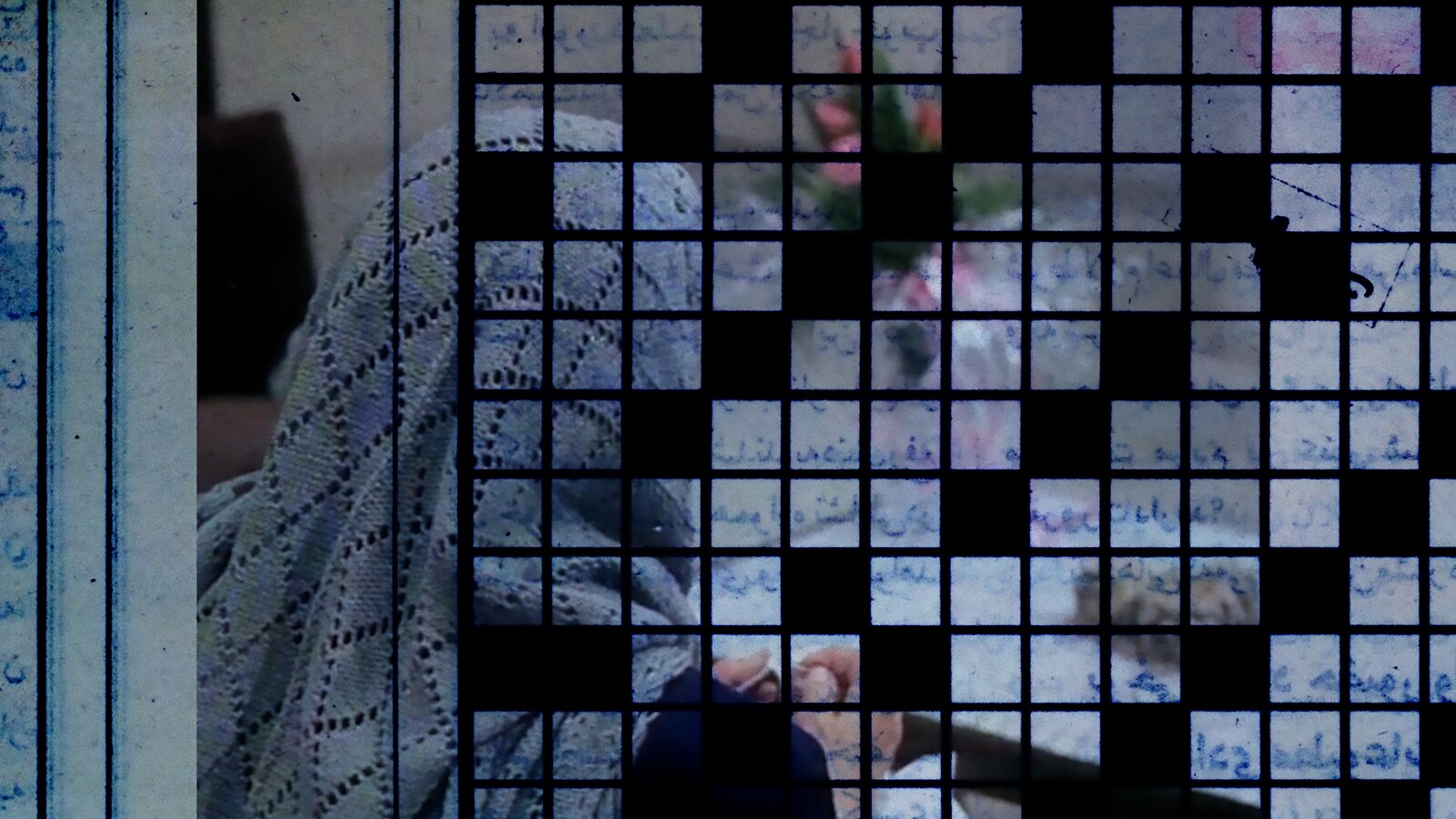Days before the New York Film Festival opened, dozens of filmmakers—many from the “Currents” section—published a petition urging the festival to cut ties with Bloomberg Philanthropies due to concerns over its implication “in facilitating settlement infrastructure in the West Bank and denying Palestinians their basic rights.”1 During the fortnight, anti-war demonstrators interrupted Q&As and screenings, and a parallel Counter Film Festival was organized. How do we approach film-making after a year of live-streamed genocide in Gaza? This question lingered over the “Currents” shorts programs, curated by Aily Nash and Tyler Wilson, which seek to foreground “new and innovative forms and voices.” A select group of films from the programs challenged how images influence our perception of reality, particularly in contexts of violence, prompting critical reflection on our roles as viewers.
Two films in “The Will to Change” program reveal the limits of observation, turning the horror of witnessing war into an act of self-reflection. Black Glass (2024) by Adam Piron conjures the ghosts of the past (and the present) by speaking about the intrinsic relationship between early image-making technologies and the ongoing processes of settler colonialism. Piron examines Eadweard Muybridge’s early photographic work, commissioned by the US Army to capture the aftermath of the Modoc War (1872–73). Muybridge staged stereographs showing Chief Kintpuash and other Modoc leaders handcuffed and captured, posed scenes of military action, and created images of the Lava Beds in California. He portrays the Modoc people as defeated exotic subjects, reinforcing the narrative of Indigenous people’s subjugation by the US Army. Over a dark, atmospheric soundtrack composed by Jakob Maqe, Piron’s handheld camera navigates Modoc and Nüümü lands in Northern California. Simultaneously, a subtitled dialogue explores how Piron rediscovered the Muybridge stereographs through a friend. The images of the Lava Beds become increasingly distorted and blurred, to the point of being unwatchable.
Unlike the Muybridge images, which assert control, surveillance, and dominance over Modoc territories, Piron portrays the landscape as unattainable, allowing it to tell its own story of resistance. His filmmaking process becomes forensic research: it challenges the historical misinformation in the photographs through geographical evidence. Following the rise of fake news, contemporary cinema has seen a shift towards forensics—see the works of Forensic Architecture, Larissa Sansour, the New Red Order and, even earlier, Walid Raad. These projects interrogate images and historical narratives to visualize human rights abuses and claim justice. In a similar vein, Miranda Pennell’s Man Number 4 (2024) is a desktop video featuring a sweeping zoom-out on a digital image taken in Beit Lahia in Northern Gaza, meticulously dissected by a monotonous, expository voiceover (delivered by filmmaker John Smith). First, the indistinct pixels are described as sand and earth from an open-air pit. Gradually, human figures emerge: a group of Israeli soldiers and hundreds of men kneeling in the pit. The image reveals a soldier holding a lamp that illuminates five shirtless men, identified as healthcare workers. By slowly unfolding the image, its forensic information, and its implications, Pennell urges viewers to recognize their responsibility in bearing witness.
Maryam Tafakory’s Razeh-del (2024) layers found footage from 1990s Iranian films with clippings from Iran’s first “women’s newspaper,” Zan (founded by publisher Faezeh Hashemi in 1998). These clippings are juxtaposed with the story of two schoolgirls attempting to make a film despite the ban on women attending film school in Iran during that decade. As censorship intensified, the number of blank pages in Zan multiplied—a defiant editorial choice. In Tafakory’s film, one of these white sheets, stained by the ink from the text printed on its reverse, evokes the thoughts and discourse occurring under the constraints of cultural censorship. “The shadow of the reverse page resembles erased traces rather than emptiness,” Tafakory says. Through her forensic approach to found footage and careful recollection of lingering historical traces, Tafakory fosters a critical approach to knowledge that values both the seen and the unseen.
Like Adam Piron, Malena Szlam allows the landscape to speak for itself, exploring new ways of interacting with our environment. Archipelago of Earthen Bones — To Bunya (2024) embarks on a journey through deep geologic time, tracing the paths of the Earth’s seven tectonic plates. Szlam’s cartography interweaves mountains at sunset, Gondwana rainforest trees, and the ancestral landforms of the Hunga Tonga–Hunga Haʻapai submarine volcano at the ridge of the Australian tectonic plate. Szlam’s approach to cinema introduces a slow archaeology, inviting viewers into a deep listening experience. When images have lost meaning and death has been rendered invisible to our scrolling eyes, forensic aesthetics—as exhibited powerfully across this festival—open up a space for political possibility.
“Open Letter to the New York Film Festival to End Complicity in Israeli War Crimes,” Screen Slate (September 26, 2024), https://www.screenslate.com/NYFFletter.



